Oregon Cherry Growers, Inc., is on a path to take fresh and processed cherries to new territory. The grower cooperative is test marketing fresh cherries packed under a leading berry consumer brand this season and launching new maraschino-type products to spur consumption.
The cooperative, with about $65 million in annual sales, processed over 27 million pounds of cherries last year that came from grower-members and offline fruit from Northwest packing houses.
The roots of Oregon Cherry Growers go back to the tough economic times of The Great Depression when many cooperatives were organized to help improve returns for grower-owners.
Today’s cooperative, headquartered in Salem, is the result of a 1984 merger between two cooperatives, The Dalles Cherry Growers, which dates back to 1924, and the Salem-based Willamette Valley Cherry Growers that began in 1932.
The co-op’s membership of about 60 growers is equally split between the Willamette Valley, where most of the processed cherries are grown, and The Dalles region, where fresh and some processed are produced.
Tim Ramsey, president and chief executive officer, has been the head of the cooperative for two years. Ramsey, who has three decades of marketing experience in the food and beverage industry, believes growth opportunities for the co-op are in value-added products.
He’s putting his belief into action as Oregon Cherry Growers launches several new products this year.
Fresh
The cooperative sends its fresh cherries to Wapato, Washington, for packing by Pacific Coast Cherry Packers, a joint venture between Sage Fruit Company and Oregon Cherry Growers. Sage Fruit markets the cooperative’s fresh cherries. Oregon-produced cherries are hydro-cooled at The Dalles facility and trucked to Wapato for packing.
The Washington-Oregon partnership, created nearly ten years ago, allowed both the cooperative and Sage Fruit to pool resources to upgrade cherry packing equipment. Last year, about 700,000 boxes of cherries were packed at the Wapato facility, with about half coming from Sage Fruit orchards and half from the cooperative’s grower-members.
New optical sorting technology installed at Pacific Coast Cherry Packers will make its debut this season. “The optical sorter will allow us to sort and size more accurately,” said Ramsey. “The technology will allow our growers to get all the ups for size premiums and be paid fairly for what he or she grew.”
And while optical sorters, with sophisticated cameras and computers that sort for specific size, color, and defect are becoming more widespread on West Coast cherry packing lines, he doesn’t think the technology necessarily translates into more offline or cull fruit.
“There will be challenges in some years, depending on the crop size and fruit quality,” Ramsey said. “But for the most part, if 10 to 15 percent is usually sorted out for size and defects, that number won’t change significantly.”
Naturipe label
In addition to the new optical sorter, fresh cherries this year will be packed under a nationally known consumer label in select test markets.
A new business venture that began on the cooperative’s processed side with major berry supplier and marketer Naturipe has created opportunity on the fresh side. Oregon Cherry Growers will be drying strawberries and other fruit of Naturipe, one of the largest North American suppliers of strawberries, blueberries, raspberries, and blackberries.
“We’ll have a whole collection of items in collaboration with Naturipe, including marketing some fresh cherries under their label,” Ramsey said. Fruit dried by the cooperative will be sold under the Naturipe label in wholesale and retail markets.
“While Naturipe has been very much a fresh market company, they are also excited about this new venture because it gives them a home for their cull strawberries and other fruit,” he said. “Naturipe, with its year-round offering of fruit, has excellent consumer program and customer recognition of its brand. We’ll be testing to see if the strength of the Naturipe name can return a higher value to our growers.”
He believes the venture will help accelerate the cooperative’s development of value-added products and marketing.
Processed growth
On the processed side, four facilities in The Dalles and Salem process cherries into the following: maraschino-style, individually quick frozen (IQF), purees, glacé, and as infused and dried ingredients for foods like ice cream, nutrition bars, and baked goods.
“Our ingredient line is a big piece of our business,” said Ramsey, who added that they supply cherry ingredients for about 80 percent of the ice cream brands produced in the United States.
They produce the cherries for Ben and Jerry’s Cherry Garcia ice cream. At the cooperative’s Riverside plant in The Dalles, about 70 percent of the volume of cherries processed is made for ice cream ingredients, and the remaining volume is processed as dried ingredients.
Royal Harvest is the cooperative’s label for its natural line of products that are sweetened without corn syrup and free of sulfites and preservatives.
Royal Harvest products use Fair Trade, non-genetically modified cane sugar, and natural colors and flavors to satisfy globally conscious buyers like Ben and Jerry’s. The use of natural colors and non-GMO sugar opened up new markets in places like Whole Foods.
The cooperative recently launched “The Ultimate Ingredient Fruit,” a product line that includes dried cherries, raspberries, wild and cultivated blueberries, and strawberries and other fruits in the near future.
The fruits are dried to specific moisture levels that were determined after interviews with chefs and product testing to be optimum for baked goods like scones, muffins, bars, and cakes.
The co-op’s dried blueberry products have been very popular in export markets, like Japan.
Ramsey says that while sales of the dried ingredients and frozen products are growing, helped by health and nutrition trends, trying to energize sales of maraschino-type cherries has been more challenging. But he thinks he has a winner with the co-op’s newly developed value-added package for maraschinos.
Maraschino cherries have been around a long time, with little innovation to the product category. Maraschino cherries, which date back several centuries to the marasca cherry variety of Croatia, were originally brined in alcohol and considered a delicacy for European aristocrats.
For decades, bartenders and bakers have scooped the bright red fruit out of gallon jars to top drinks, sundaes, and desserts, says Ramsey, who recalled doing the same thing when he was a bartender during his college days. But things are different now with food safety concerns.
Oregon Cherry Growers aims to transform that scooping practice with new portion-controlled pouch packages that are shelf-stable and can be kept at ambient temperatures before opening. Another advantage will be reduced freight and storage space.
The cooperative spent 18 months developing a proprietary method of packaging maraschino-style cherries for food service and retail sales. The consumer line of packages is designed for a clip strip and can be hung in the grocery store near the ice cream condiments and liquor.
“Maraschinos are impulse buys. But they are hard to find in a grocery store because everyone puts them in a different location,” he said. “With smaller portion sizes, you can use them up in a weekend and won’t have them sitting in your refrigerator for years.” He admitted to having the same jar in his refrigerator from when he started with the cooperative two years ago. •

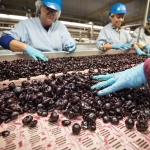
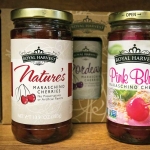
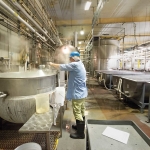
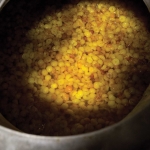
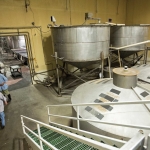
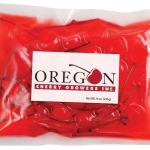
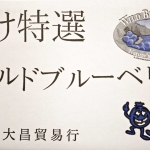
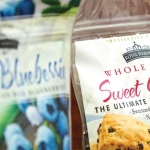





Leave A Comment